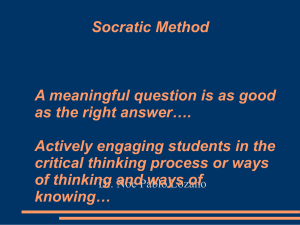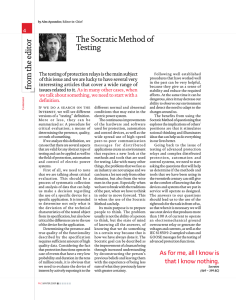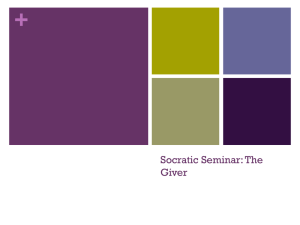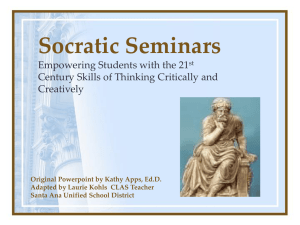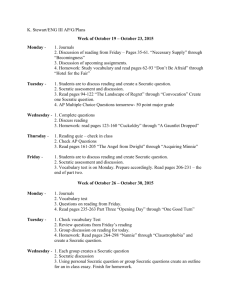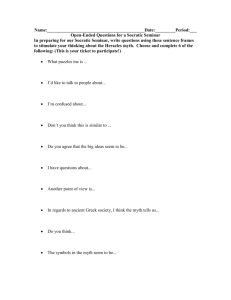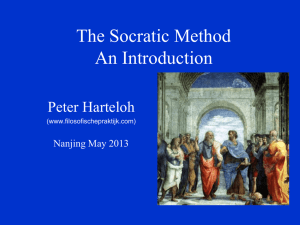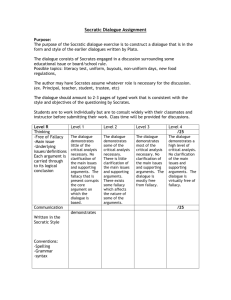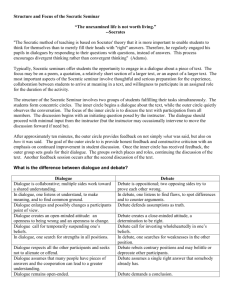Learning Objects and Pedagogies
advertisement
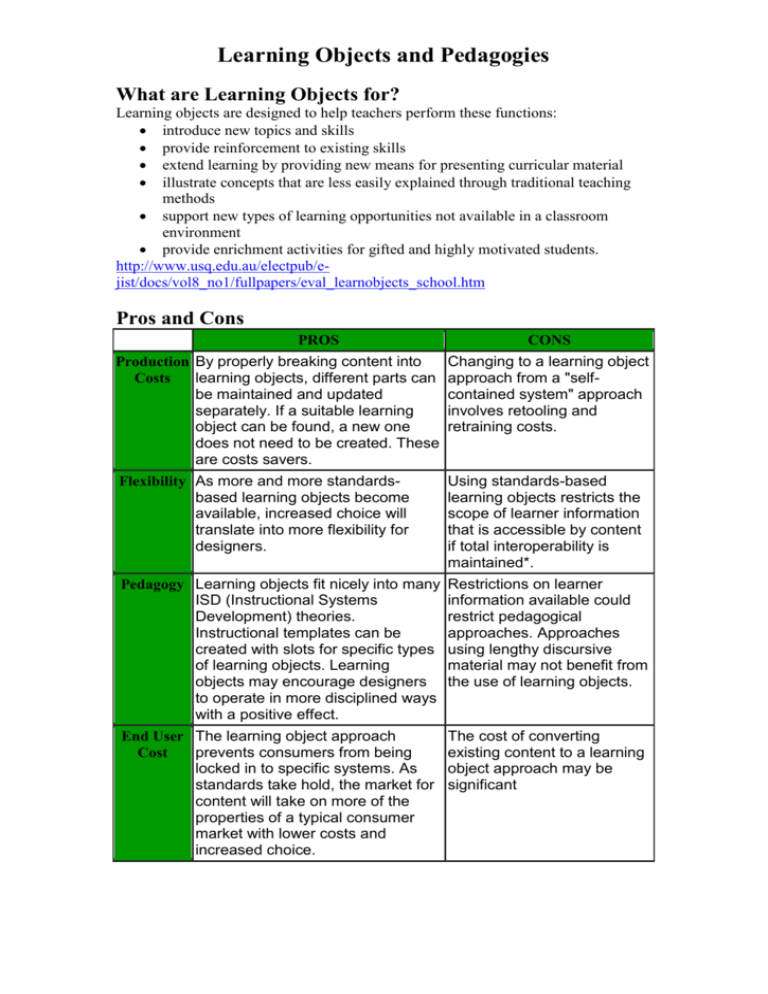
Learning Objects and Pedagogies What are Learning Objects for? Learning objects are designed to help teachers perform these functions: introduce new topics and skills provide reinforcement to existing skills extend learning by providing new means for presenting curricular material illustrate concepts that are less easily explained through traditional teaching methods support new types of learning opportunities not available in a classroom environment provide enrichment activities for gifted and highly motivated students. http://www.usq.edu.au/electpub/ejist/docs/vol8_no1/fullpapers/eval_learnobjects_school.htm Pros and Cons PROS CONS Production By properly breaking content into Costs learning objects, different parts can be maintained and updated separately. If a suitable learning object can be found, a new one does not need to be created. These are costs savers. Changing to a learning object approach from a "selfcontained system" approach involves retooling and retraining costs. Flexibility As more and more standardsbased learning objects become available, increased choice will translate into more flexibility for designers. Using standards-based learning objects restricts the scope of learner information that is accessible by content if total interoperability is maintained*. Pedagogy Learning objects fit nicely into many ISD (Instructional Systems Development) theories. Instructional templates can be created with slots for specific types of learning objects. Learning objects may encourage designers to operate in more disciplined ways with a positive effect. Restrictions on learner information available could restrict pedagogical approaches. Approaches using lengthy discursive material may not benefit from the use of learning objects. End User The learning object approach Cost prevents consumers from being locked in to specific systems. As standards take hold, the market for content will take on more of the properties of a typical consumer market with lower costs and increased choice. The cost of converting existing content to a learning object approach may be significant Industry All leading system vendors and Support content producers are supporting SCORM and other standards that are based on or that complement a learning object approach. Realistically, it is twelve to eighteen months between the time the vendor community adopts an approach and the time products that implement the approach are available http://www.eduworks.com/LOTT/Tutorial/prosandcons.html How can I use them in my classroom? Teachers and Students generally think Science is…. Facts about the natural world Laws of the Universe Hands on experimentation Scientific Information BUT Students live in a technological world and therefore their learning skills are often digitally focused. Learning Objects can with a little pedagogical imagination be more than just task dependent. Teachers can use them as stand alone learning units or integrate them into their teaching. Background Research http://www.thelearningfederation.edu.au/verve/_resources/tlf_report_final.pdf The Teacher’s Role • • • The teacher’s role is critical in structuring tasks and interventions in ways which prompt students using ICT to think about underlying concepts and relationships. With simulated experiments and measuring tools, students need a rationale for purposeful investigations, controlling variables, fair testing and so on. Experiences of multimedia simulations etc need to be coupled with discussion, analysis and reflection (time to think and communication ideas effectively) Teaching Strategies: • • • • Whole class discussion/demonstration Embed Learning Objects in documents that provide links to further resources and encourage communication and reflection Provide concrete experiences to enable students to move between representations and to discuss different representations Differentiate instruction using Learning Objects by encouraging more able students to identify: – aspects of the situation not addressed by the Learning Object – further ways of representing ideas not used by the Learning Object – further questions that arise out of using the Learning Object and ways of addressing these questions Getting the students to collaborate before the task is underway is an effective strategy. Using Collaborative Learning – http://www.thirteen.org/edonline/concept2class/coopcollab/index.html e.g. Using Socratic Dialogue How to Do Socratic Dialogue Stages 1. Stimulus 2. Debate / discussion – facilitated 3. De-briefing 4. Follow-up activity Source: http://www.sfcp.org.uk/socratic_dialogue.htm e.g. Using Group Work Source: Outcomes of Cooperation - Johnson and Johnson 1994 • • • • • Everyone must pull together Positively support of each other Individual effort to the whole + group effort Interpersonal + group skills Group processing and analysis of progress Role Responsibilities: • Manager • Recorder • Reporter • Resources/materials manager Source: Science By Doing Support Materials Organisational Strategies: • • • • • • • • • • • • • • Jig-saw Think-Pair-Share Three-step interview Placemat and Round Robin PMI [Plus, Minus, Intriguing] Three-minute interview SWOT analysis Numbered Heads Team Pair Solo Circle the Sage Partners Venn diagram T Charts Y Charts Collaborative Learning Video - http://www.teachers.tv/video/2747 Using Problem Based Learning – Using genetics to solve a mystery - http://learn.genetics.utah.edu/units/basics/mystery/ Using Web Quests Cyclone Larry - http://zunal.com/webquest.php?user=11882 Using Graphic Organisers http://www.educationoasis.com/curriculum/graphic_organizers.htm http://science-class.net/Teachers_Graphic_Organizers.htm Net Pedagogy Portal http://www.thewebworks.bc.ca/netpedagogy/Strategies/teaching_learning_strategies.h tml Extra Reading: http://jolt.merlot.org/vol3no1/meskill.pdf http://technologysource.org/?view=article&id=242 http://ict-in-science-education.wikispaces.com Source: Melanie Isaacs Student Learning Programs Division – Victorian Department of Education
